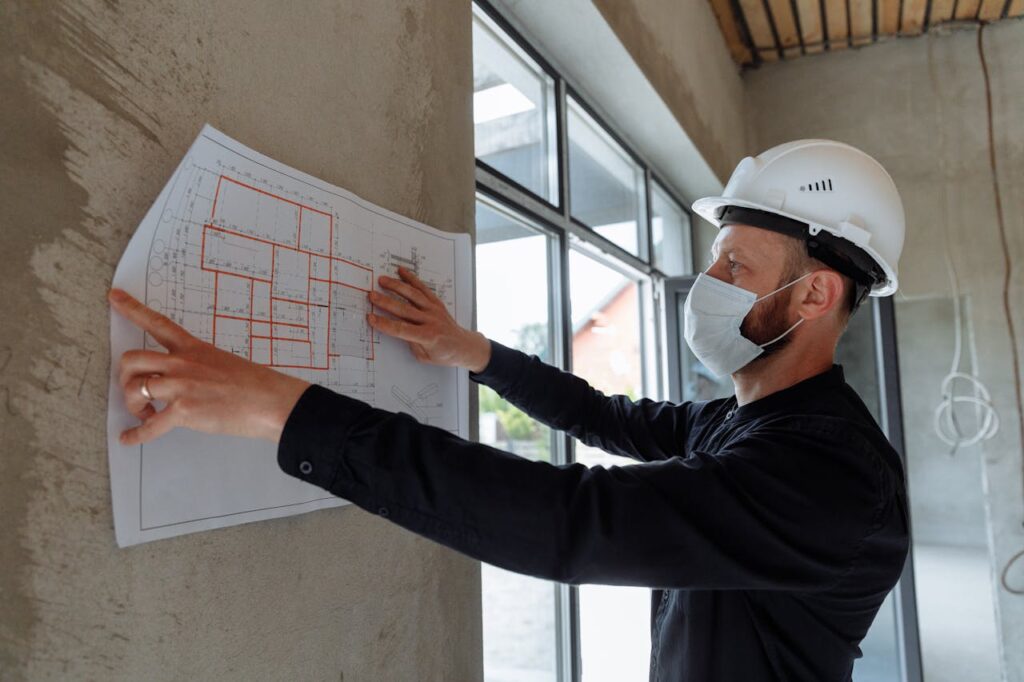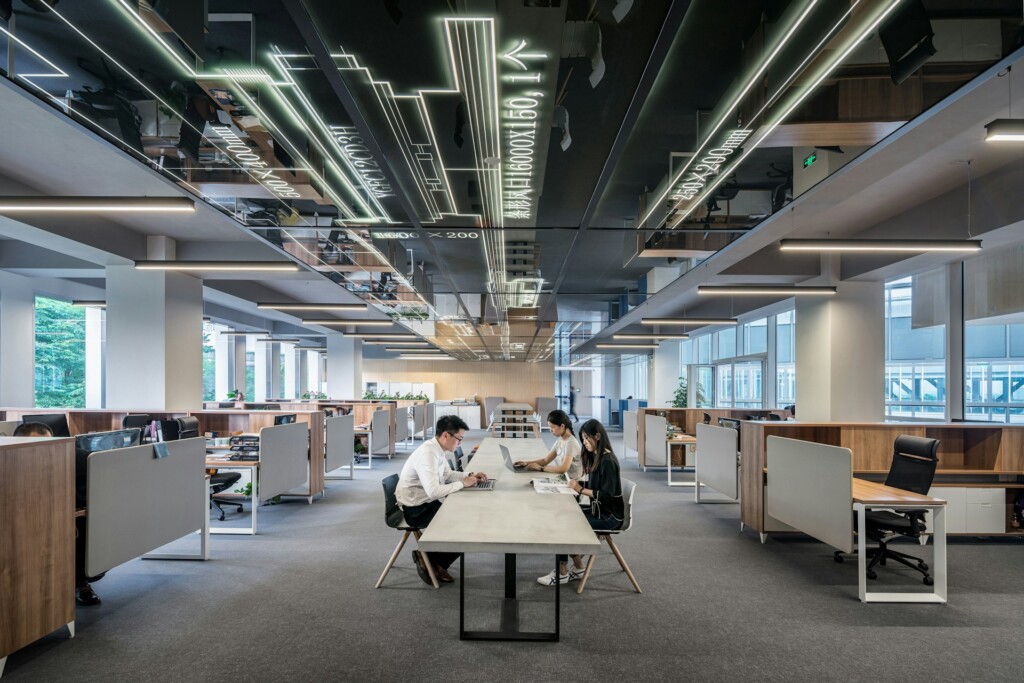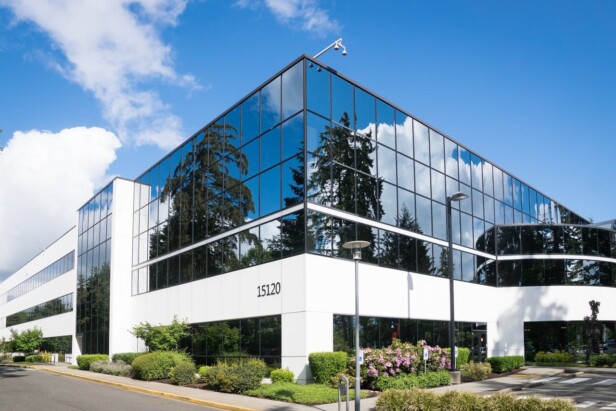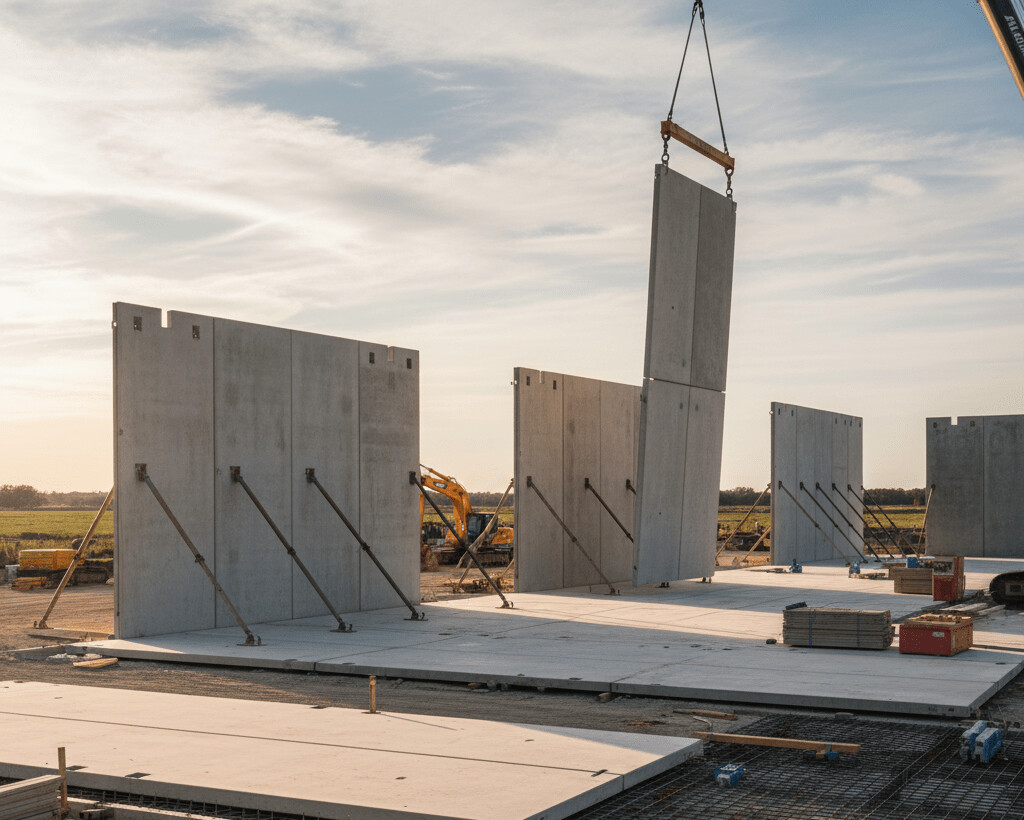Houston’s corporate headquarters market includes prominent developments like ExxonMobil City Place, Sysco, and Cemex, demonstrating the city’s capacity for delivering Class A office environments and headquarters campus projects. These complex builds require specialized expertise in MEP coordination, tenant improvements, and capital improvements that align with modern workplace demands.
We operate in this environment with preconstruction, design-build, and corporate interiors services supported by BIM and Lean construction practices. Our approach helps owners navigate from concept to turnover with clear expectations on scope, budget, and schedule across the project lifecycle.
Which Core Services Matter Most For A Houston Headquarters Build?

Effective headquarters construction relies on six fundamental services that control cost, schedule, and quality outcomes. We structure our approach around these capabilities to deliver predictable results in Houston’s competitive commercial market.
Preconstruction And Project Controls
We provide comprehensive budgeting, cost estimating, planning, and scheduling services to establish project feasibility before design begins. Our preconstruction team evaluates site conditions, regulatory requirements, and construction methods to identify potential risks early. This approach reduces exposure to design changes, weather delays, and supply chain disruptions that can derail project timelines.
Project controls integrate with preconstruction to track costs and schedules throughout construction. We monitor progress against baseline budgets and schedules, providing regular updates on cost performance and schedule adherence. Change management procedures help owners evaluate scope modifications against their impact on budget and completion dates.
BIM And Virtual Design Construction
Digital modeling through Building Information Modeling (BIM) and Virtual Design and Construction (VDC) supports visualization and coordination before construction begins. We create 3D models that identify conflicts between architectural, structural, and MEP systems during design development. This coordination prevents field conflicts that cause delays and cost overruns.
Constructability reviews use BIM models to evaluate installation sequences and identify prefabrication opportunities. MEP integration becomes more precise when mechanical, electrical, and plumbing systems are coordinated digitally before rough-in begins. Trade contractors receive coordinated drawings that reduce field questions and rework.
Lean Construction Practices
Process discipline through Lean construction methods helps eliminate waste and maintain efficient timelines. We apply pull planning techniques that synchronize trade work and material deliveries with construction sequences. Last Planner System scheduling engages trade contractors in weekly work planning to identify constraints before they impact progress.
Continuous improvement processes capture lessons learned and apply them to optimize future phases. Value stream mapping identifies non-value-added activities that consume time without advancing project completion. These methods reduce project duration and improve resource utilization.
Design-Build Delivery
Single-point accountability unifies design and construction under one contract, streamlining project decisions and reducing coordination complexity. We integrate architects, engineers, and construction teams from project initiation through completion. This approach enables concurrent design and construction phases that compress overall project schedules.
Early contractor involvement during design development improves constructability and cost control. Design decisions receive immediate feedback on construction methods, material availability, and cost implications. Owners benefit from faster decision-making and reduced change orders during construction.
Corporate Interiors And Tenant Improvements
We deliver office build-outs and capital improvements aligned with workplace functionality and corporate culture requirements. Our approach addresses space planning, technology infrastructure, and finish selection within budget and schedule parameters. Tenant improvement work requires coordination with building operations and existing occupants.
Capital improvements in occupied buildings demand careful phasing and noise control to minimize business disruption. We schedule work during off-hours when necessary and maintain clear communication with facility managers throughout construction. Emergency response procedures ensure immediate resolution of any issues that could affect ongoing operations.
Safety And Field Transparency
Site-specific safety training and OSHA compliance programs protect workers and reduce liability exposure for owners. Our safety protocols include daily hazard assessments, weekly safety meetings, and monthly safety audits. All supervisors maintain OSHA 30 certification and have authority to stop unsafe work practices immediately.
Mobile, cloud-based field reporting keeps project teams informed of daily progress, safety observations, and quality control activities. Digital documentation provides real-time updates on construction status and enables quick response to field questions. This transparency improves communication between field crews, project management, and ownership teams.
How Does Delivery Method Impact Cost, Schedule, And Risk?
The choice of delivery method creates direct effects on project economics, timeline certainty, and risk exposure. We structure our approach around methods that generate predictable outcomes while maintaining quality standards throughout the construction process.
Design-Build Integration
Our design-build approach eliminates the traditional handoffs between separate design and construction contracts. We integrate design professionals, procurement specialists, and field teams under one coordinated effort from project start. This concurrent delivery model allows design development to proceed while we advance early construction activities like site preparation and long-lead procurement.
Fixed-price contracts provide cost certainty that supports capital planning and budget approvals. Rather than waiting for completed drawings to establish pricing, we can offer firm costs based on performance specifications and program requirements. This approach reduces the risk of budget surprises during construction and gives owners clear financial expectations for board presentations and funding decisions.
MEP Preconstruction Depth
Complex headquarters buildings demand sophisticated mechanical, electrical, and plumbing systems that require specialized planning. We assign dedicated MEP specialists to work through constructability challenges before field work begins. These team members focus on coordination between building systems, access for maintenance, and integration with architectural elements.
Value management reviews examine system selection, efficiency ratings, and life-cycle costs to optimize long-term operations. Our MEP preconstruction team analyzes energy performance, maintenance requirements, and replacement cycles to help owners understand total cost of ownership beyond initial construction investment.
Supply Chain And Self-Perform Capabilities
Centralized procurement through established supplier relationships helps stabilize material costs and delivery schedules. We maintain agreements with key vendors for critical building components, which provides price protection and priority scheduling during high-demand periods. This supply chain management reduces exposure to market volatility and material delays that can impact project timelines.
Self-perform capabilities in concrete, rough carpentry, and select MEP work give us direct control over quality and scheduling for critical path activities. Rather than waiting for subcontractor availability, we can deploy our own crews to maintain project momentum during peak construction periods. This flexibility becomes particularly valuable when coordinating complex building systems or working around occupied spaces.
Risk Mitigation And Dispute Readiness
We structure contracts and project controls to identify potential issues before they escalate into costly disputes. Regular progress reviews, budget tracking, and schedule monitoring create transparency that helps prevent misunderstandings between project stakeholders. Clear documentation practices and change order procedures provide the foundation for resolving issues quickly.
When disputes do arise, we support claims management and forensic analysis to protect project progress and relationships. Our approach emphasizes factual documentation, timely communication, and collaborative problem-solving rather than adversarial positions. This dispute readiness helps keep projects moving forward while addressing legitimate concerns from all parties involved.
What Market Expertise Supports A Modern Headquarters Project?

Corporate headquarters construction demands expertise across multiple market sectors. We bring diverse project experience from Class A office construction to mission-critical data centers, giving us the depth needed to handle complex headquarters requirements.
Office Construction And Corporate Interiors
We build and renovate Class A office space, headquarters campuses, and workplace interiors. This core competency includes understanding modern workspace design, technology integration, and the sophisticated MEP systems that support today’s corporate environments. Our office construction experience ranges from single-floor tenant improvements to multi-building campus delivery.
Corporate interiors require specialized knowledge of executive spaces, conference facilities, and collaborative work environments. We coordinate these builds with minimal disruption to ongoing business operations, managing everything from security protocols to after-hours access requirements.
Healthcare, Education, And Hospitality Experience
Our work across regulated and public environments translates directly to stronger controls and stakeholder coordination on headquarters projects. Healthcare construction teaches us stringent quality standards and complex approval processes. Education projects require coordination with multiple user groups and phased delivery around active operations.
Hospitality construction brings expertise in high-end finishes, guest experience design, and 24/7 operational requirements. These skills apply directly to headquarters projects that need executive-level finishes and always-on building systems.
Industrial, Life Sciences, And Mission Critical Infrastructure
Work in light manufacturing, distribution, life sciences, and data centers informs our approach to robust MEP and redundancy planning. Industrial projects teach us heavy power requirements, specialized ventilation, and equipment coordination. Life sciences work requires understanding clean environments, precise environmental controls, and validation processes.
Mission-critical projects, particularly data centers, demand uninterruptible power systems, advanced cooling, and redundant infrastructure. These capabilities directly support headquarters buildings that cannot afford downtime or system failures. Our experience with backup generators, UPS systems, and failover protocols ensures headquarters operations stay online.
Commercial Diversity: Cold Storage To Mixed-Use
Broad commercial experience across cold storage, self-storage, and mixed-use projects supports our ability to handle site logistics, code compliance, and phased delivery around active operations. Cold storage projects require specialized insulation, refrigeration systems, and temperature monitoring that inform our understanding of environmental controls.
Mixed-use projects teach us to coordinate multiple building types, shared utilities, and complex zoning requirements. This experience helps us navigate the regulatory complexity that often surrounds headquarters developments, especially those that include retail, parking, or hospitality components.
Tenant Improvements And Capital Projects
We manage upgrades and phased renovations in occupied buildings, aligning construction activities with business continuity needs. This includes coordinating work schedules around business hours, managing dust and noise control, and maintaining security protocols during construction.
Capital projects require understanding depreciation schedules, budget cycles, and long-term facility planning. Our experience with occupied renovations ensures headquarters improvements can proceed without forcing temporary relocations or business interruptions.
How Should Owners Plan Preconstruction And Controls For Houston HQs?
Effective preconstruction planning begins with scope clarity from day one. We work with owners to define program requirements, departmental adjacencies, technology infrastructure, and MEP system intensity before any design work starts. These early decisions drive cost estimates and schedule development, preventing expensive changes later in the process.
Early scope definition also establishes baseline parameters for project controls implementation. When owners clarify their operational needs upfront, we can structure cost tracking systems and schedule management protocols that align with their business objectives and timeline expectations.
Project Controls Framework
Project controls provide the foundation for cost management throughout headquarters construction. We implement tracking systems that monitor budget performance, schedule updates, and change management processes from preconstruction through project closeout. These controls identify potential cost overruns before they impact the overall budget.
Schedule management requires weekly updates and milestone tracking to maintain project momentum. We coordinate with design teams, subcontractors, and material suppliers to ensure schedule adherence while managing the complexity of headquarters-scale construction in Houston’s active market environment.
Change order management becomes critical when owners request modifications during construction. Our project controls framework evaluates the cost impact, schedule implications, and approval requirements for each change request, maintaining transparency in the decision-making process.
Design Quality And Constructability
Constructability reviews during preconstruction identify potential design conflicts before construction begins. We evaluate structural systems, MEP coordination points, and material selections to ensure buildability and cost efficiency. These reviews prevent field conflicts that could delay construction or increase costs.
Design error identification requires systematic review of drawings, specifications, and coordination between disciplines. We use our construction experience to flag potential issues during the design development phase, allowing architects and engineers to make corrections before bid documents are finalized.
Risk Management And Communication
Houston’s weather patterns require specific risk mitigation strategies for headquarters construction projects. We develop contingency plans for extreme weather events, supply chain disruptions, and labor availability challenges that could impact project delivery. These plans include alternative material sources and flexible scheduling options.
Stakeholder coordination involves regular communication plans that keep owners, design teams, and regulatory agencies informed of project progress. We establish clear escalation paths for decision-making and issue resolution to prevent delays from communication breakdowns.
Supply chain challenges in today’s market require proactive material procurement and vendor coordination. We monitor material availability, pricing trends, and delivery schedules to minimize supply-related delays and cost increases during construction.
Claims Prevention And Resolution
Claims evaluation processes help resolve disputes quickly when they occur during headquarters construction. We maintain detailed project documentation, including correspondence, change orders, and schedule impacts, to support forensic analysis if disputes arise. This documentation protects both owners and our construction team from unfounded claims.
Damage assessment procedures ensure accurate evaluation of any issues that could lead to claims or disputes. We work with owners to establish clear protocols for identifying, documenting, and resolving potential problems before they escalate to formal dispute resolution processes.
Conclusion and Next Steps

Houston stands as a proven market for corporate headquarters construction, with established infrastructure supporting major corporate campuses and Class A office developments. We deliver comprehensive support through integrated preconstruction services, BIM coordination, Lean delivery methods, design-build execution, MEP preconstruction planning, and robust project controls that address the complexities of modern headquarters environments.
Moving forward requires decisive action on four critical fronts. Define your program requirements early, including space adjacencies, technology infrastructure needs, and MEP intensity levels. Select a delivery method that aligns with your risk tolerance and timeline objectives. Establish clear budget parameters and schedule targets with built-in contingencies for market variables. Most importantly, engage preconstruction services at project inception to ensure constructability reviews, accurate cost forecasting, and coordinated design development from the start.
Ready to advance your corporate headquarters project in Houston? Connect with EB3 Construction to discuss your specific requirements and delivery approach.




